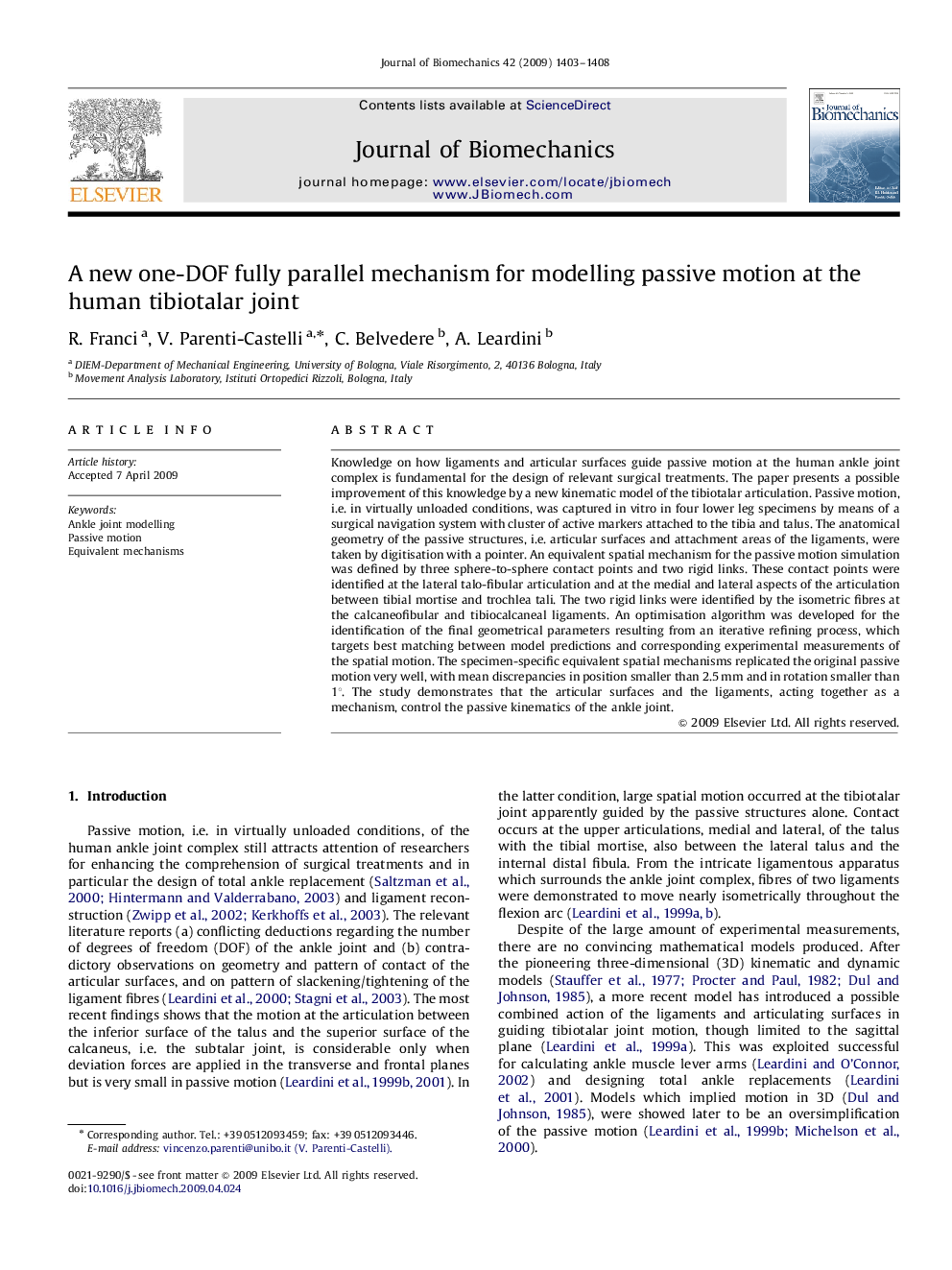| کد مقاله | کد نشریه | سال انتشار | مقاله انگلیسی | نسخه تمام متن |
|---|---|---|---|---|
| 872840 | 910284 | 2009 | 6 صفحه PDF | دانلود رایگان |

Knowledge on how ligaments and articular surfaces guide passive motion at the human ankle joint complex is fundamental for the design of relevant surgical treatments. The paper presents a possible improvement of this knowledge by a new kinematic model of the tibiotalar articulation. Passive motion, i.e. in virtually unloaded conditions, was captured in vitro in four lower leg specimens by means of a surgical navigation system with cluster of active markers attached to the tibia and talus. The anatomical geometry of the passive structures, i.e. articular surfaces and attachment areas of the ligaments, were taken by digitisation with a pointer. An equivalent spatial mechanism for the passive motion simulation was defined by three sphere-to-sphere contact points and two rigid links. These contact points were identified at the lateral talo-fibular articulation and at the medial and lateral aspects of the articulation between tibial mortise and trochlea tali. The two rigid links were identified by the isometric fibres at the calcaneofibular and tibiocalcaneal ligaments. An optimisation algorithm was developed for the identification of the final geometrical parameters resulting from an iterative refining process, which targets best matching between model predictions and corresponding experimental measurements of the spatial motion. The specimen-specific equivalent spatial mechanisms replicated the original passive motion very well, with mean discrepancies in position smaller than 2.5 mm and in rotation smaller than 1°. The study demonstrates that the articular surfaces and the ligaments, acting together as a mechanism, control the passive kinematics of the ankle joint.
Journal: Journal of Biomechanics - Volume 42, Issue 10, 22 July 2009, Pages 1403–1408